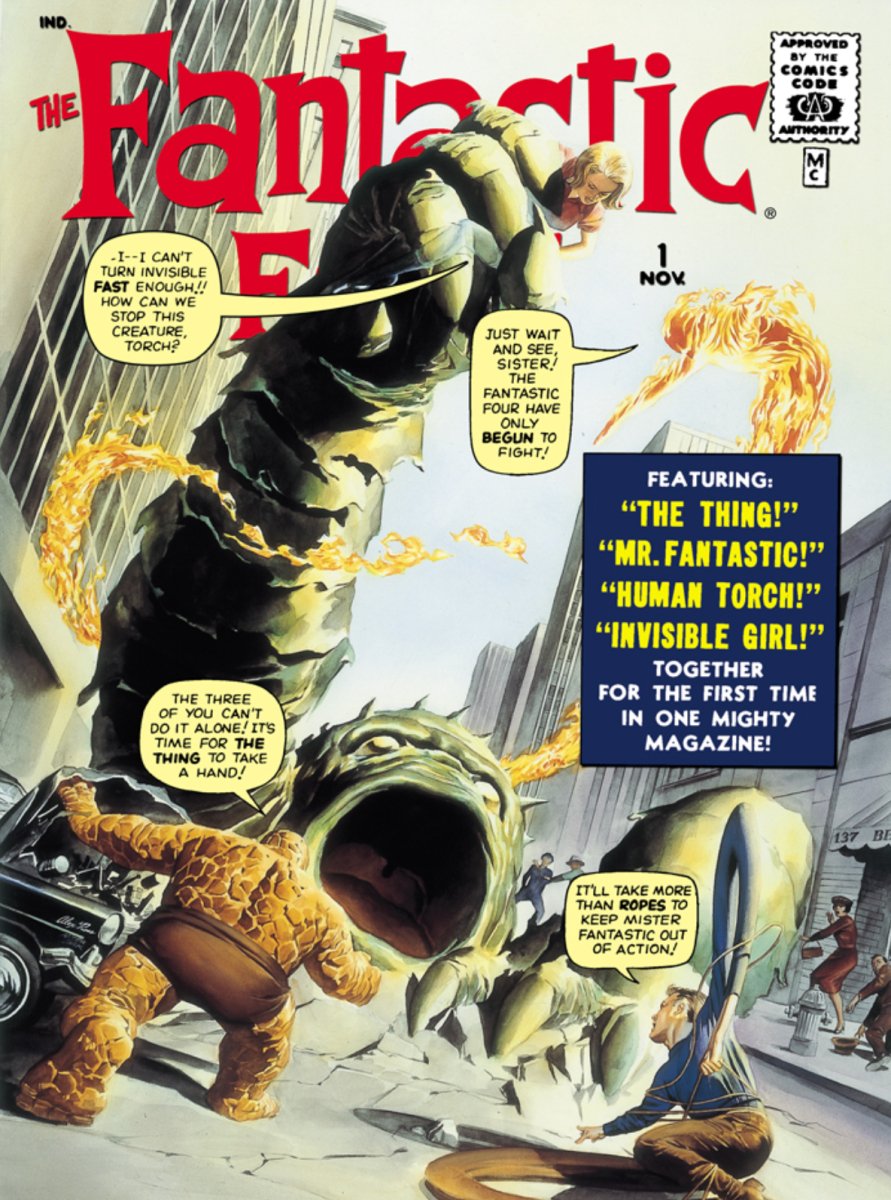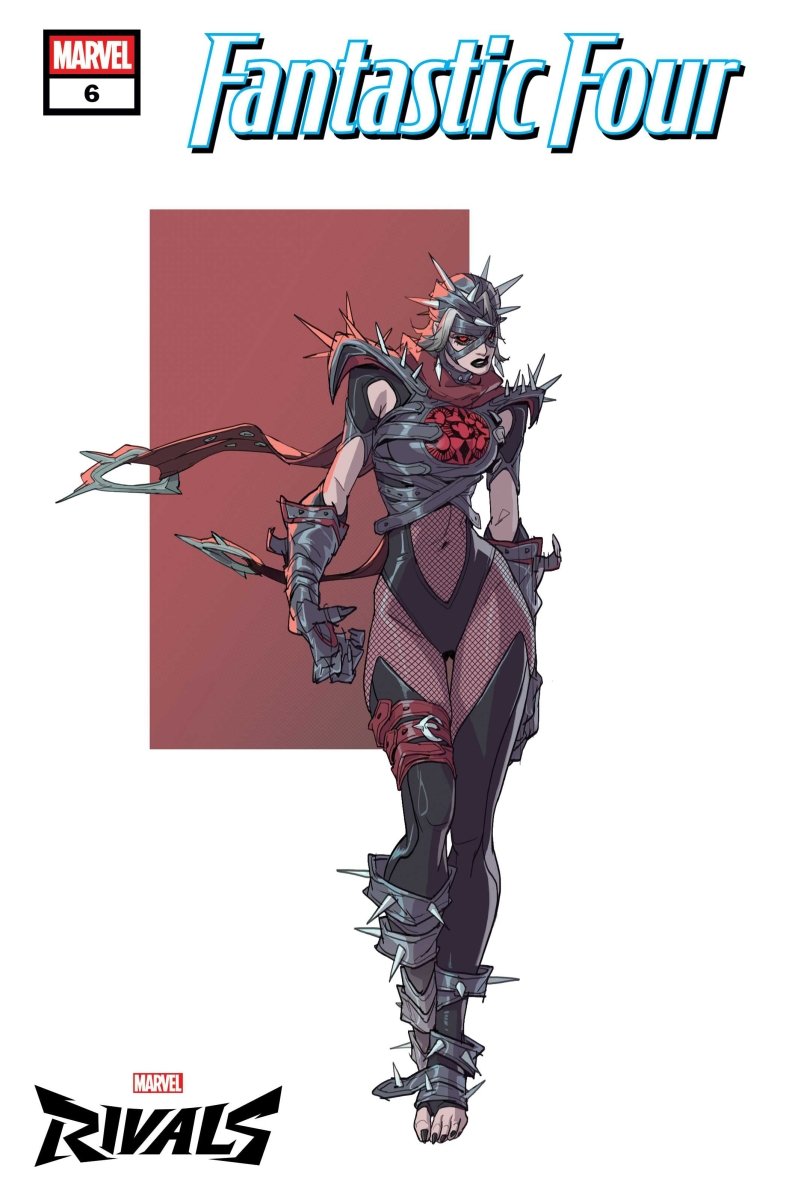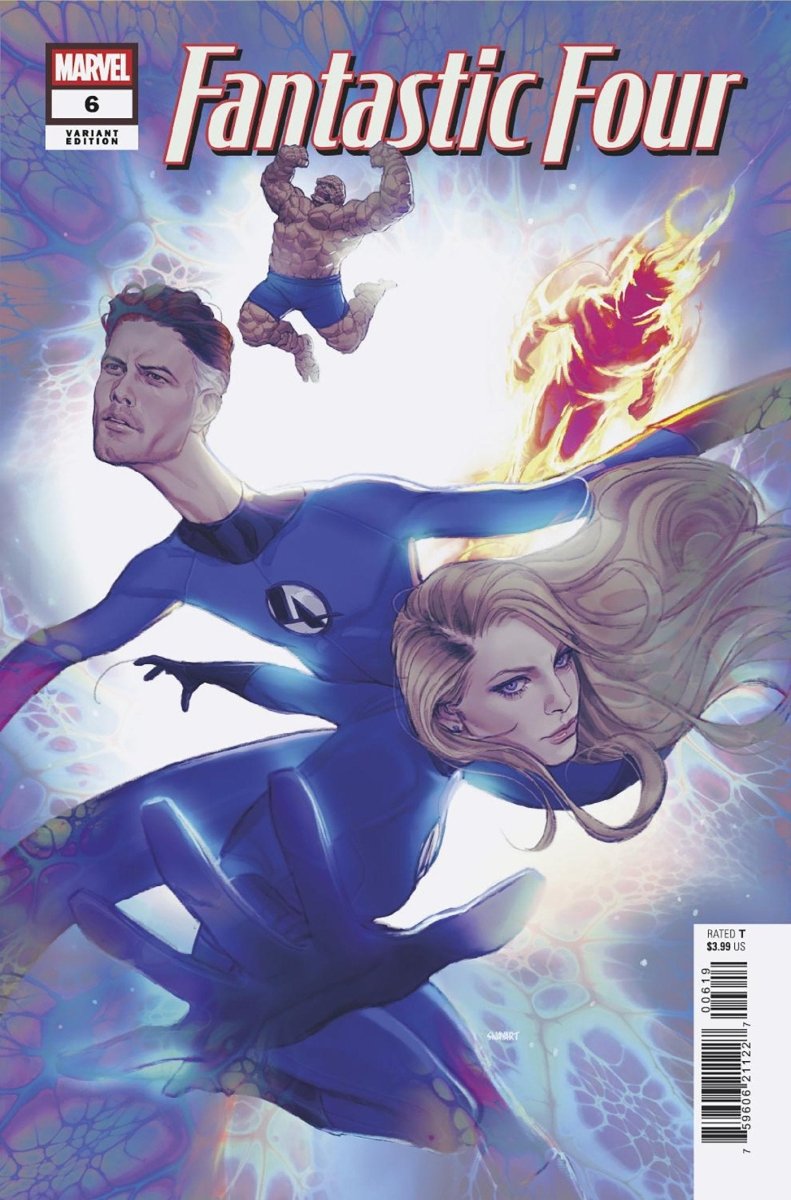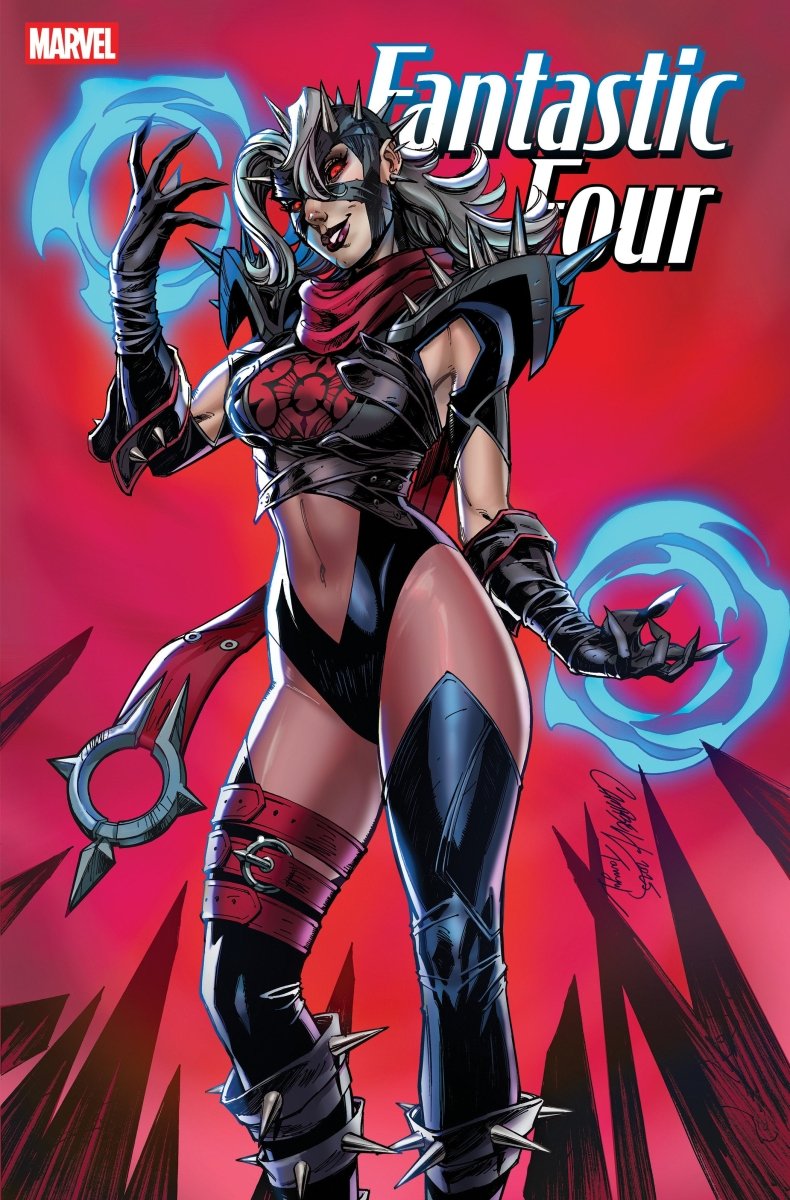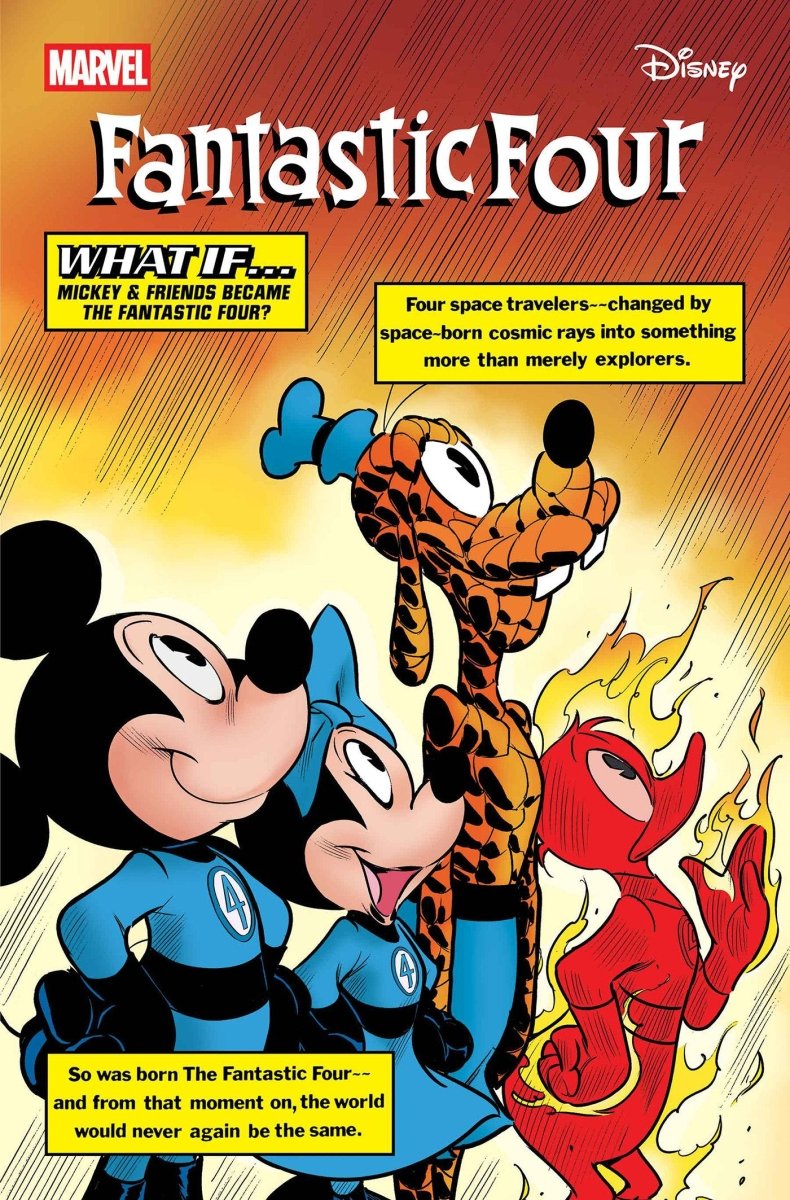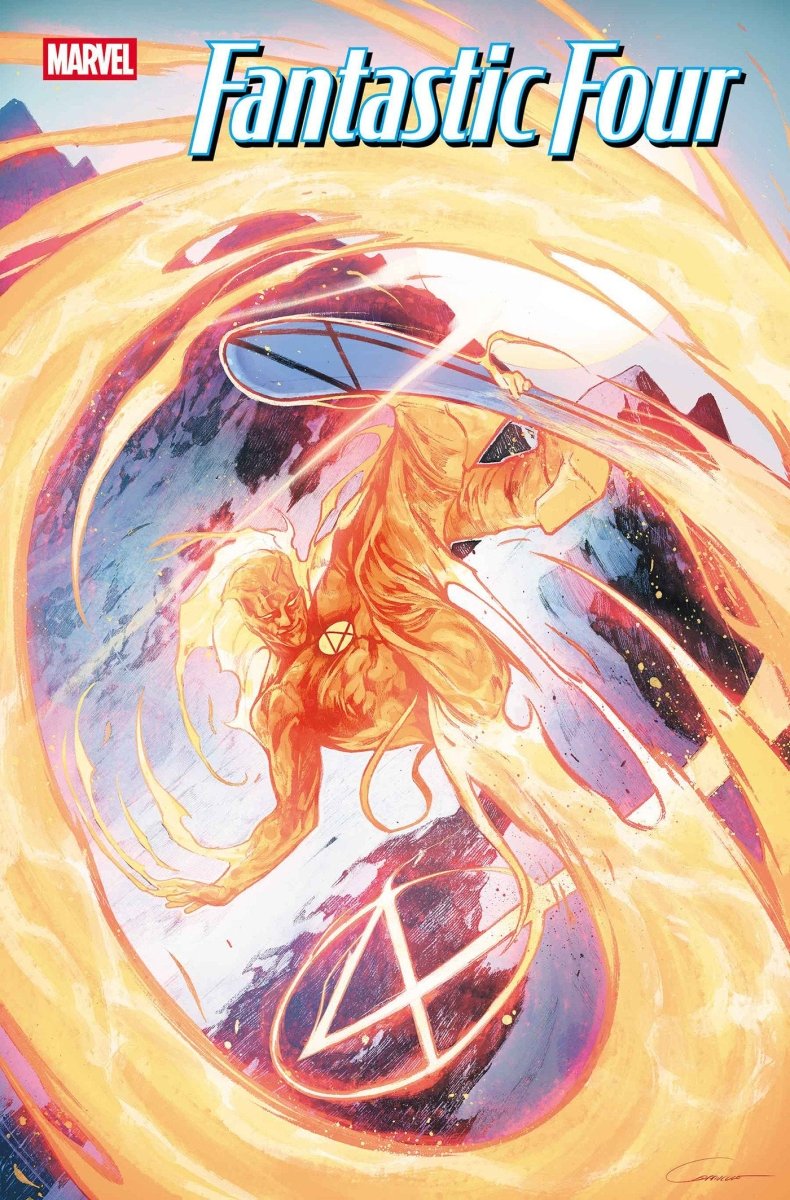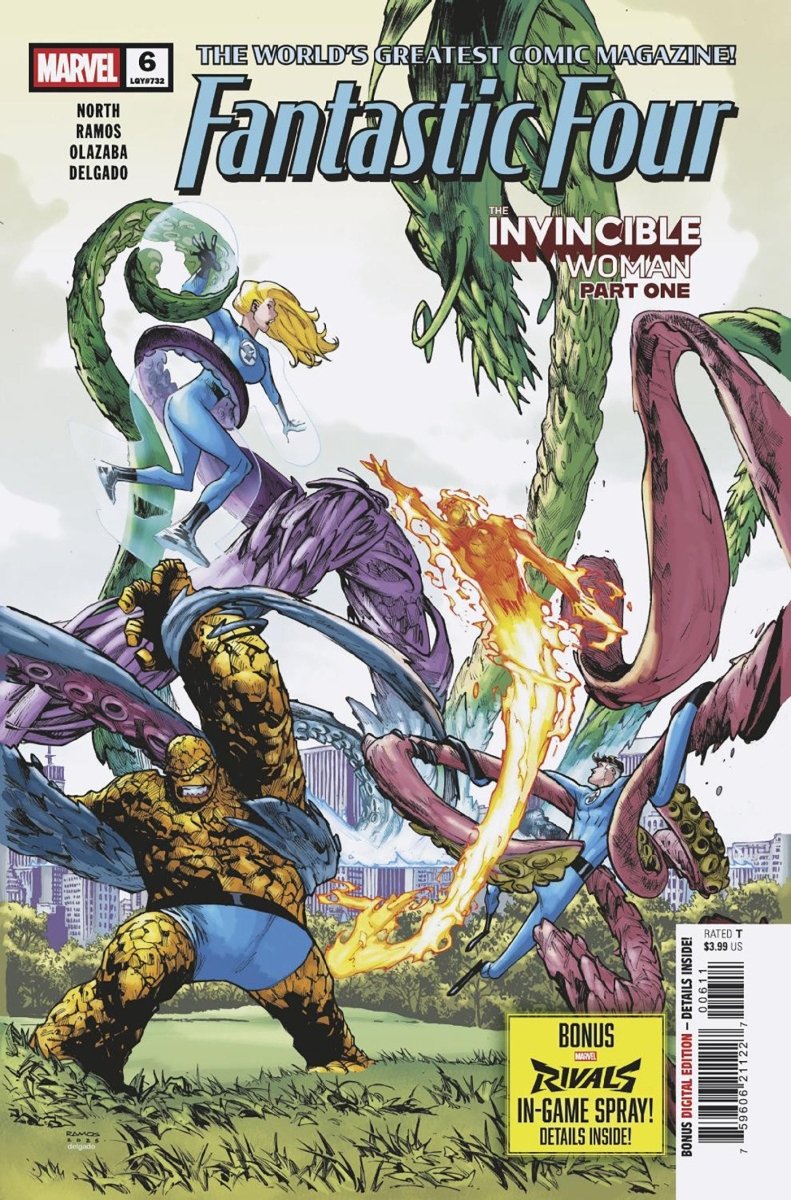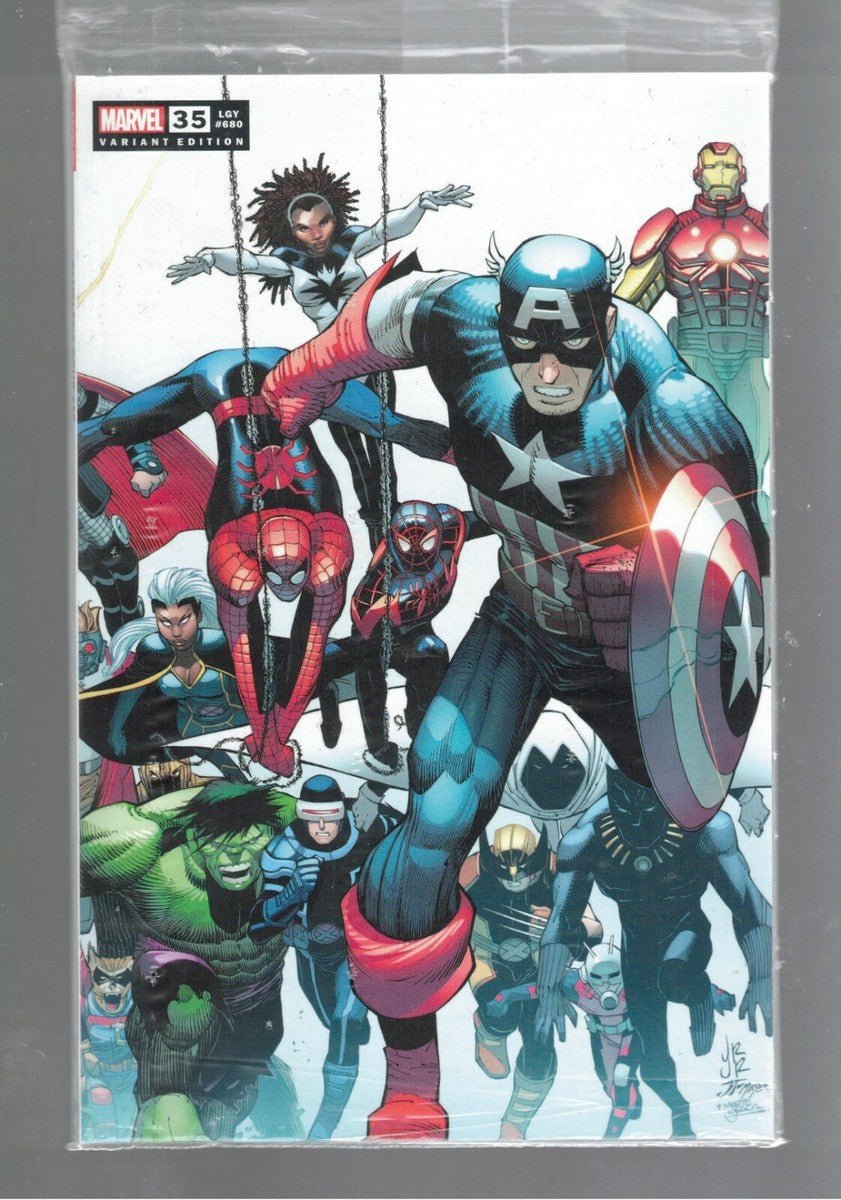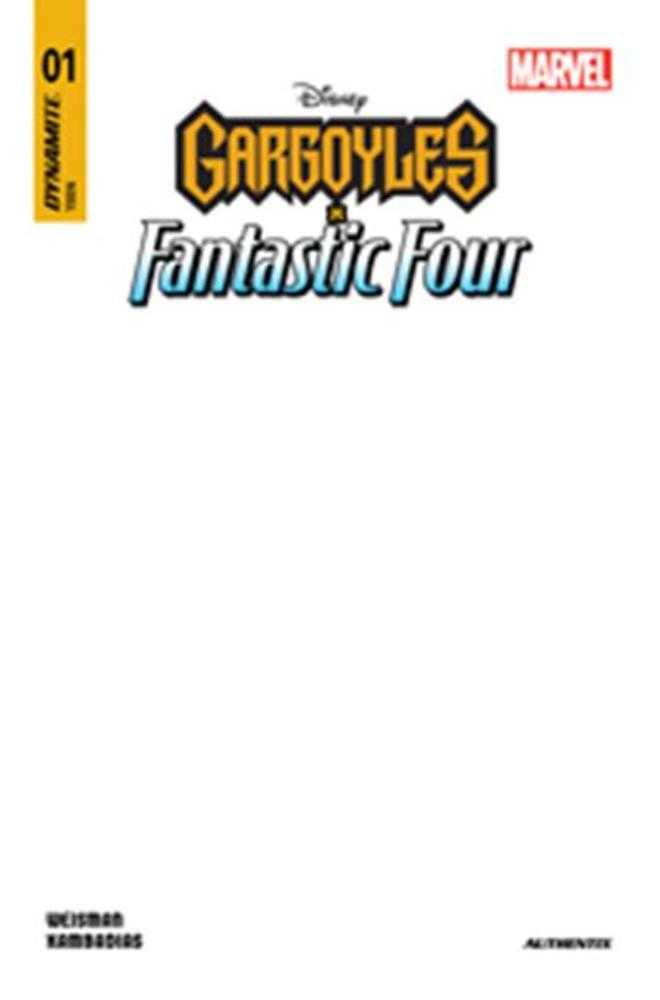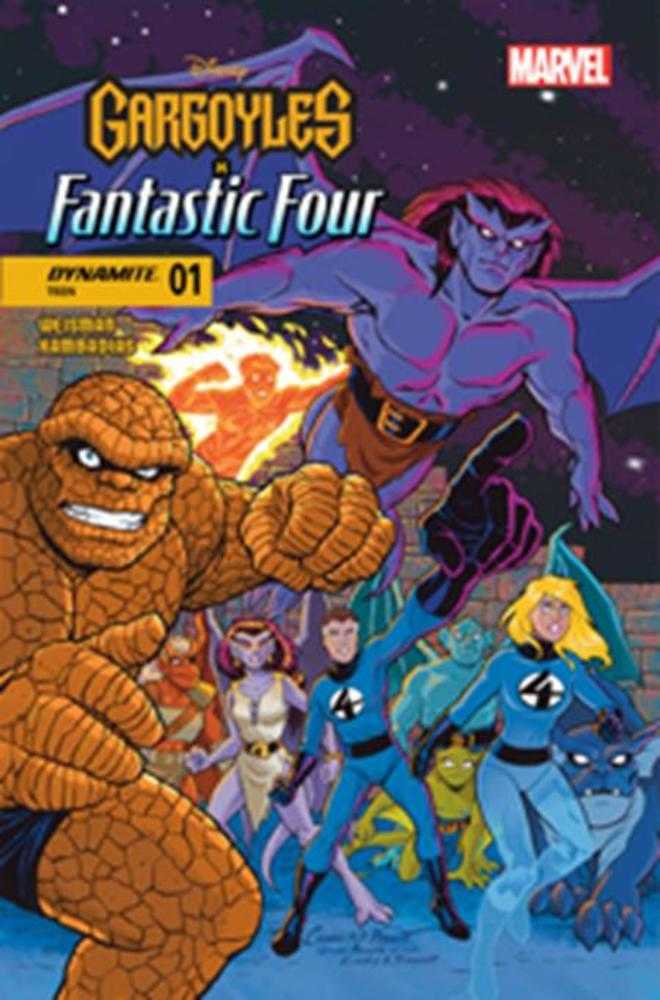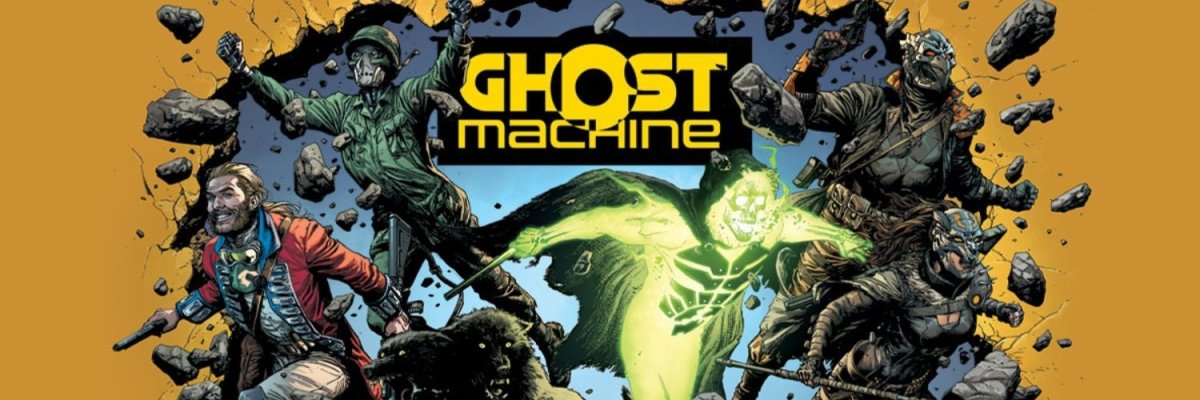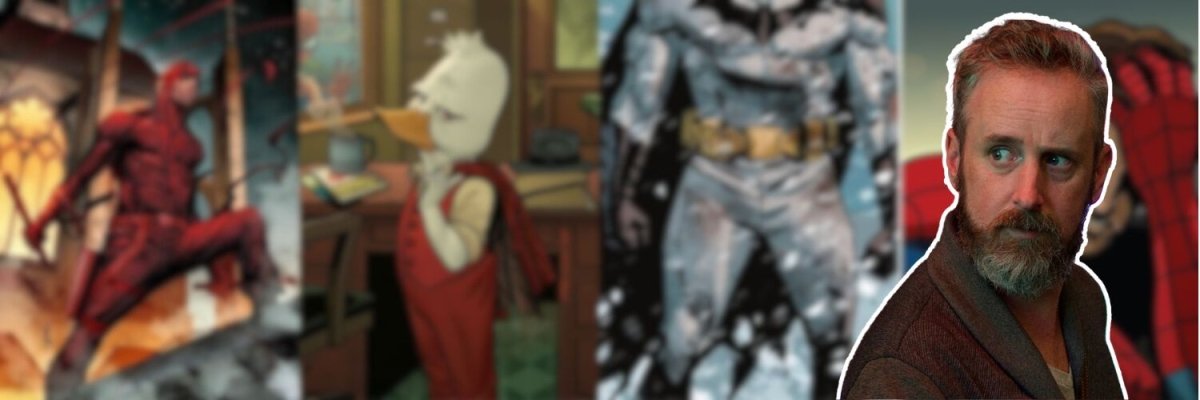F4F: Sue Storm a.k.a Invisible Woman
On the third week of our Fantastic Four month, my true love gave to meeee… I don’t see my gift! Where is she? Help! (Okay, sorry, I had to make that joke once in this article!)
Today, we have the amazing, the spectacular, the fantastic – Dr. Susan “Sue” Storm-Richards, also known as the Invisible Woman! She’s been an adventurer, a scientist, a mother, a bad@$$, and an overall amazing character. So, without further ado, let’s commence!
The Feminist Icon - by Petar
I’ll start on a very frank note – Matt and I have discussed the feminist (as well as the problematic) angle of Sue Storm, and how to approach it. I’ve been hesitant to start writing this, coming from a male perspective – but I felt it’s one of the essential aspects of the character to talk about. Just wanted to acknowledge that before I delve a bit deeper.
Whoever you are and wherever you are, the impact and importance of Sue Storm cannot be denied. She’s a tour de force on her own and one of the most important female characters (and icons!) in the Marvel pantheon. But the road to getting there wasn’t easy…
Fantastic Four started publication back in 1961, when second-wave feminism was still in its infancy. Ideas of what a woman could do were still limited to domestic life, and their roles outside of this – in the workplace, education, sexuality, etc. – were quite restricted.
It was in these tumultuous times that Lee and Kirby began writing Marvel’s first family, and as part of that, cast Sue in some very traditional roles. She starts off as the female lead and the caregiver of the team – or the “heart” of the team, as many still describe her. Many of her interactions can be viewed through a sexist lens, as she was often portrayed as the typical love interest, sometimes incompetent or delicate. Even her powers – turning invisible – and her name – Invisible Girl – can be seen as a reflection of this: passive and submissive.

However, these traits can also be seen as subversive, as many comics at the time were trying to be. She used her powers proactively to remove herself from the male gaze (problematic as that is), but also to take on villains like Doom. Depending on the moment, one could wonder if Lee and Kirby intended her as a commentary on the role of women in society – before quickly reverting to more classic examples of sexism.
But even early on in the story, Sue begins taking on leadership roles. She uses the fact that villains often underestimate or overlook her. In Fantastic Four #5, during Dr. Doom’s very first appearance, he demands Sue as a hostage. She uses this to get close to him and ultimately helps secure victory for the team. It’s also interesting to note that Reed follows her lead here, treating her as an equal.
Sue Never Falters
This relationship ebbs and flows – but Sue never falters in her beliefs. Even though she takes moments to “be girly” by trying on dresses, she also demands to be treated as an equal member of the team. Her moment with Reed in Civil War (as Matt will discuss) isn’t the first time she takes a stand and demands respect – she threatens to leave Reed much earlier, in 1973’s Fantastic Four #130.
What makes Sue important, valuable, and just brilliant is that you can track the progress of feminism and society’s view of women through her development. Over the years, she took on more and more of a leadership role, eventually becoming what she is today – one of the most beloved and powerful women in Marvel.
A facet of Sue’s character that many have pointed out as important today is that she didn’t need to sacrifice more traditional, feminine traits to become a feminist icon. In many cases, motherhood is used to threaten female superheroes, or they’re expected to give it up. Sue, instead, embraced it – taking on the mother role for the team and later becoming an actual mother to her children and a host of aliens in the Future Foundation.
Her powers expanded and evolved too. Where she initially could only turn invisible, she later gained the ability to manipulate light waves to make other things invisible. Eventually, her powers grew more aggressive – allowing her to create and control force fields. Today, Sue Storm is considered the most powerful member of the Fantastic Four when it comes to powers.
While they might not be for everyone, it’s interesting to read the original Fantastic Four material. You can grab a few floppies through the Facsimile Editions or Marvel Masterworks (early Epic Collections are tough to find) – and if you’re a completionist, Fantastic Four Omnibus Volume 1 is being reprinted in time for the movie!
Also, it’s interesting to read the revisionist or modern retellings of the early stories. Books like Fantastic Four Grand Design (and the Treasury Edition is a massive treat) and Full Circle (with its Expanded Edition) retell the origins or revisit those early times from a more modern perspective.
It’s also fun to see that the upcoming movie seems to be taking this approach too – with Sue possibly leading the team. Vanessa Kirby has expressed her love for some storylines, and it’s always exciting to see an actor take interest in the books. Speaking of…
Taking a Turn for… Malice
Ms. Kirby has stated that when she was researching the role, she became obsessed with Malice. She’s not the only one – when Sue appeared in the popular Marvel Rivals hero shooter, Malice was the additional skin available for her (Reed’s was the Maker, of course) – making many wonder who this… dangerous… lady is.
Malice is another controversial step in the development of Sue Storm and the exploration of feminism. Long story short – after a traumatic experience, the villain Psycho-Man manipulates Sue into developing the evil personality of Malice. She’s edgy, sadistic, and looks like she just came back from a night out in Berlin.

As Malice, Sue becomes more powerful – and turns against the rest of her teammates. This is her aggression and hatred turned outward, a grim version of the loving and nurturing Sue. All the negative emotions and thoughts she was forced to suppress are finally unleashed.
Malice also represents Sue’s trauma and repression. Around this time, she begins embracing aspects of her personality that are seen as “darker” – like wearing more revealing outfits. She also changes her name from Invisible Girl to Invisible Woman.
This is yet another one of those very controversial topics – how valid is it to suggest that a villainous persona drove this change, rather than it being an act of liberation? Does the manifestation of Malice imply that we should suppress our darkest thoughts, or does it actually encourage us to face them before they turn us malicious?
Many essays could be (and I’m sure have been) written on this by people much smarter than me. I’ll just humbly leave the recommended reading so you can form your own opinion on the story:
- Marvel Masterworks: The Fantastic Four Vol. 26 (contains the original Malice arc)
- Fantastic Four Epic Collection Vol. 22: This Flame, This Fury (the second big Malice arc)
- Fantastic Four Epic Collection Vol. 23: Nobody Gets Out Alive (continuation)
- Fantastic Four by Byrne Omnibus Volume 1 and Volume 2 (Malice stuff takes place in the second one)
Making the Choice! - by Matheus
Civil War is the most famous modern Marvel event. And listen, it’s a cool idea – that’s what it was made to be. Millar was the guy who broke toys, and while this event was very marketable, it also made us nerds a little angry and sad. But again, it’s a cool idea.
If you’ve made it this far, I think you’ve heard of it. But just in case you haven’t: Civil War forces the whole Marvel Universe to choose a side. After the New Warriors cause an incident that results in numerous deaths, the government enacts the Superhero Registration Act. This means that if you want to be an active hero, you need to operate under government orders. Iron Man supports it and becomes its public face, while Captain America strongly opposes it, claiming it’s dangerous and a threat to freedom in a universe where superheroes are as common as squirrels.
And of course, Cap is right. That’s what makes this book hard to read for me – because every single hero who sides with Stark is so aggressively wrong it hurts. But to be fair (and to make a hard claim against myself), it is possible to see Tony’s side… if you squint really hard. The book is marketed as presenting a complex issue, and that’s what makes it tough.
But credit where it’s due – when you read the actual book, Millar seems to arrive at the same conclusion. It’s not the balanced, two-sided story it sells itself as, but it is a good book about dealing with the cost of standing by what you believe. It’s about asking yourself when to fold, especially if you start seeing yourself as the villain after a lifetime of being the hero. But again… broken toys. The truly brilliant pieces surrounding Civil War are the ones in the sidelines.
Reed chooses Tony. Sue chooses Cap. That’s how we arrive at the best Sue Storm moment of the modern era. And it comes at a cost.
Many fans think Reed is out of character for what he does, and Millar would argue that a logical man chooses the logical, practical side. Wherever you stand on that, the point is – Sue is absolutely in character here. She leaves Reed. She leaves the family to join the resistance. And she leaves a letter. A letter that, in my humble opinion, is a beautiful, dark, and necessary step if you’re going to split up the Fantastic Four for a marketable event like this.
That’s almost impossible to do, since the Fantastic Four’s whole motto is sticking together no matter what. (And yes, fans would argue that’s exactly why Civil War makes them feel out of character – but that’s a rabbit hole we can’t escape.)
Let's read that together:



It’s heartbreaking, and it defines Sue for me. She’s not making this decision against the family – she’s making it for the family. For the things she knows Reed will regret. That’s what always makes her such a strong character.
“If Reed is the most intelligent person in the world, then Sue is the most emotionally intelligent person in the world.” That quote has been thrown around a lot by Vanessa Kirby in the press for the new movie, and it hits exactly the right spot.
To the fans yelling at me because they hate all of this – my last argument would be this: yes, Reed does things here that don’t feel true to him. But he does them. And it’s a mistake with consequences. We’ve all been there. Why wouldn’t we let our characters be there too?
And in the end, we know they’re going to fix it. So maybe let’s appreciate them being thrown into situations that seem impossible, even annoying, at first glance. Isn’t that what the Fantastic Four is all about? Defying the odds?
And man, here’s to Millar for making Sue a badass in these pages. She’s not just the helper by any means. She’s part of the resistance – and she’s the one to beat. There are scenes where she finally shows modern audiences the full scope of her power, and it’s the badass moment we’ve all been waiting for.

The Fantastic Four issues of the event are out of print (Reed gives his own response to the letter there) but everything we talked about here is in the pages of the main event. You can find that in trade paperback, hardcover and the newly launched small digest-size Marvel Premier Collection.
The Fantastic Four issues of the event are out of print (Reed gives his own response to the letter there), but everything we talked about here is in the pages of the main event. You can find that in the Civil War Trade Paperback, Civil War Hardcover, and the newly launched small digest-size Civil War Marvel Premier Collection.
And I also want to write my own letter to Marvel. It reads as follows:
“Dear Marvel,
How in the world has Sue Storm – one of your best characters from your most iconic, company-defining magazine – only had one, and I mean ONE, series of her own? And that was a mini-series??
What the hell???
With love,
Logic.”
It’s clear they don’t have any idea what to do with Sue outside of the family, and it’s just sad, and honestly, it makes me angry. Especially because so many authors have shown her incredible love. It’s insane to think that not one of them has been given the chance – or the support – to craft a proper solo adventure for her.
Well, at least the one we got is from Mark Waid – who gave us my favorite Fantastic Four run. And he makes her a spy!! See, we can make cool things for her. It’s as simple as that. Making her a spy reads like a no-brainer.
Like, yes. Of course Sue Storm – the woman who can turn invisible, cast force fields strong enough to choke out the Hulk, and walk silently into the most secure rooms in the Marvel Universe – would make an amazing spy. It’s not just cool, it’s kind of inevitable once you think about it. That’s the juice. That’s the whole pitch. You don’t even need to add anything to that idea.
But Waid adds Black Widow – and that’s more than fine by me.

It’s out of print (again – Marvel, c’mon), but you can still grab the last few copies of the Invisible Woman Trade Paperback if you move fast.
We should title this: “Give Her a Proper Run, You Cowards.”


![Fantastic Four By Jonathan Hickman Omnibus Vol. 1 HC Davis Final Issue Cover [New Printing, DM Only] - Walt's Comic Shop](http://waltscomicshop.com/cdn/shop/products/fantastic-four-by-jonathan-hickman-omnibus-vol-1-hc-davis-final-issue-cover-new-printing-dm-only-273691.jpg?v=1696022447&width=836)
